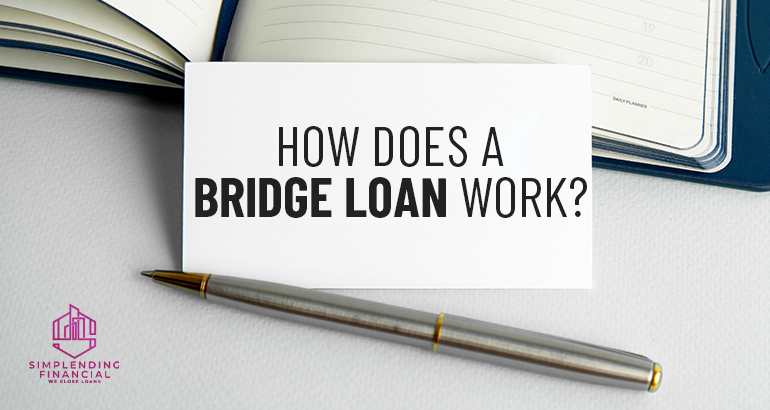How Does A Bridge Loan Work?
28 Jun 2023
Posted By Admin
Financing property can be challenging, especially if you need funds urgently. If you find yourself in such a fix, contact private money lenders in Houston Texas, like Simplending Financial, for bridge financing.
A multifamily bridge loan remains one of the options to arrange for funds on short notice. Still, only some people fully know how a bridge loan works. While bridge lending is an easy option for arranging money, it can be risky for your finances if you need to understand its pros and cons fully.
This is why we created this guide to explain how bridge loans function.
What is a bridge loan?
A bridge loan is a financial instrument designed to offer financing for a concise term. Often investors use multifamily bridge loans to arrange for funds to close a deal faster while their actual loan is in the process. It is an excellent tool for real estate investors who need funds on short notice.
Bridge loans secure most properties as collateral. They are similar to mortgages and home equity loans but have a higher interest rate. Also, multifamily bridge loans cannot be an alternative to mortgages as they are available for a concise term, usually six months to three years only.
How does a bridge loan work?
Before you conclude that you need bridge loan real estate, you must understand its intricacies. Such loans are available for real estate investors, and multifamily bridge loans can be customised as per the borrower's requirements.
Real estate investors use bridge loans to finance properties as they need funds urgently. Bridge loans are offered by not only federal financial institutions, but also private lenders.
Simplending Financial is a
nationwide private money lender, offering bridge loans to real estate investors. We make it hassle-free to have money when you need it and provide you some extra time and, more importantly, peace of mind.
In terms of rate of interest, bridge lending services constantly change higher than other financing facilities like the home equity line of credit (HELOC). Most lenders extend the facility of multifamily bridge loans only to borrowers who have excellent credit scores and low debt-to-income ratios. In most cases, lenders will provide you with only 80% of the combined value of the two properties involved in the transaction. This is why you are expected to have enough cash or equity in your current property to manage the rest of the amount.
Example of bridge loan
Let's say you have a house worth $100,000 with a $50,000 mortgage left. While your new property is worth $100,000, given excellent credit, you can get up to 80% value, i.e., $70,000, as a bridge loan.
Then you can use this amount to settle a $50,000 mortgage on the property and another $2000 in closing costs. The rest is $18000 you can use to finance the new property. And once your primary loan is sanctioned, you can settle the bridge loan.
Pros and cons of bridge loans
Pros:
Faster cash: Funds are available faster, which helps with time-sensitive or quick real estate transactions.
Flexibility: Bridge loans offer repayment flexibility. You can defer the payments until your current home sells or choose to make interest-only payments.
No contingency needed: You don't have to put any restrictions on purchasing the new home, as you can cover the cost of the new home with a bridge loan until your old house sells.
Cons:
Higher interest rates: One of the biggest cons of bridge loans is their higher interest rates and APRs than traditional loans.
Double repayments: If you cannot arrange the funds for the repayment of the bridge loan on time, then you will have to make double repayments which can severely affect your finances.
Conventional down payment: You must provide at least 20 percent of home equity in your current home before they can provide you with bridge financing.
Financing requirements: Some lenders only provide multifamily bridge loans if the borrower agrees to take a mortgage for their new home from them.
Conclusion
A bridge loan can be a valuable financing tool to buy new homes, provided you know how to use them correctly. We hope this guide helps you understand how such loans work.


